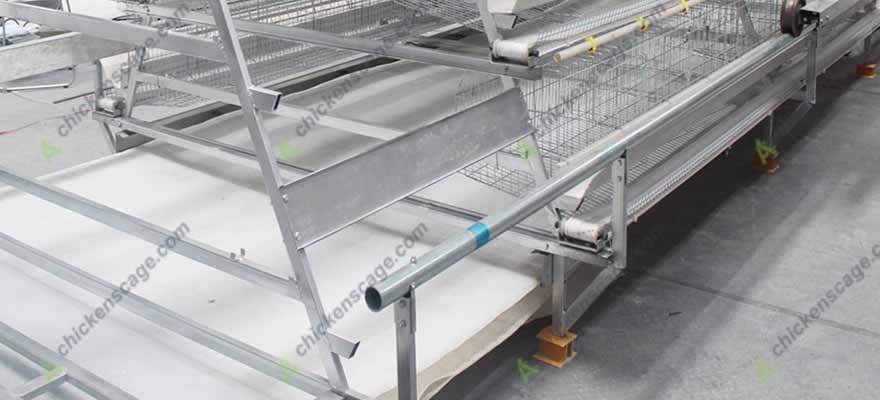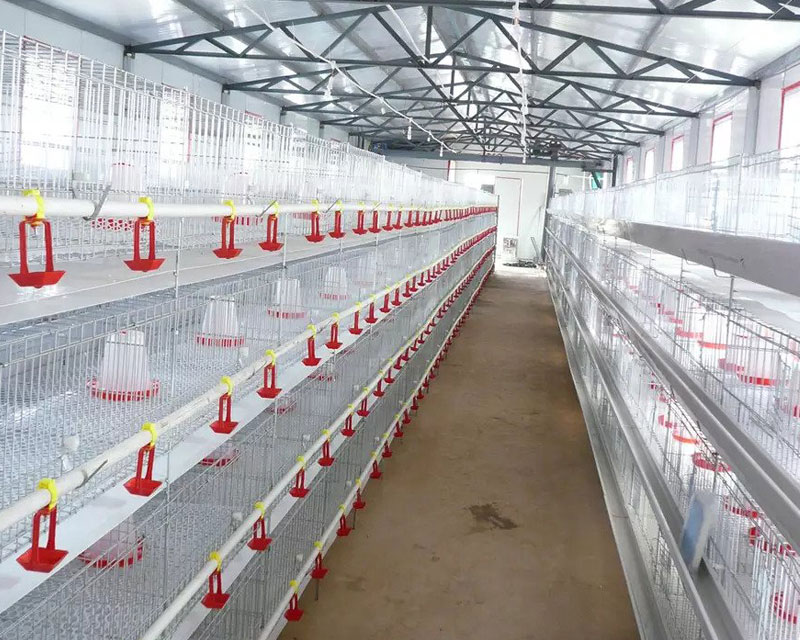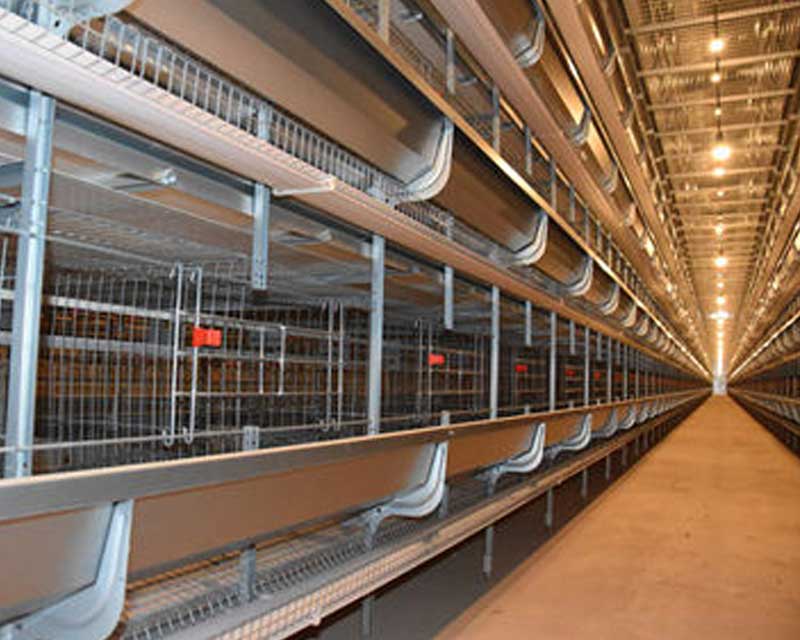The Ultimate Guide To RTL Chicken Cage Design
If you raise poultry, you are aware of the significance of creating a chicken coop that protects the health and safety of your animals. Farmers looking for a safe and effective way to rear their hens frequently choose RTL (Ready-to-Lay) chicken cages.
We shall examine RTL chicken cage design in more detail in this article, along with its significance. The things to take into account when creating your cage, the advantages of utilizing RTL chicken cages, various types of cages, how to design an effective cage, frequent mistakes to avoid, and maintenance advice will all be covered.

Introduction
The construction of chicken coops that are specially made for ready-to-lay chickens is referred to as RTL chicken cage design. The design of the cage ensures that the birds are comfortable, safe, and healthy, which is essential for maximum egg production.
The importance of RTL chicken cage design cannot be overstated. It not only provides a safe environment for the birds but also increases egg production and profits for poultry farmers. The various aspects to take into account when designing your cage, the advantages of using RTL chicken cages, and how to properly maintain your cage are all covered in this article.
Factors to Consider in RTL Chicken Cage Design
Several factors should be considered when designing an RTL chicken cage.
Cage size and capacity

The cage's size and capacity are essential to guarantee the comfort and safety of the birds. The cage should be spacious enough to contain the birds, and the capacity of the cage should be appropriate for the number of birds you plan to raise.
Cage material
The cage should be made from strong, long-lasting materials. It also must be safe for the birds. Common materials used in constructing RTL chicken cages include galvanized steel, plastic, and wood.
Cage ventilation and lighting Proper ventilation and lighting are essential in keeping birds healthy and comfortable. The cage should be well-ventilated to prevent the formation of harmful gases. In addition, adequate lighting is needed to stimulate egg production.
Insulation for cages
Insulation is important to keep the birds at a suitable temperature, especially in severe weather. Insulation also helps in preventing moisture growth, which can harm the birds' health.
Proper garbage disposal and drainage
To avoid the accumulation of ammonia and other dangerous gases, the cage should be designed with adequate drainage and waste disposal systems. This improves the health and comfort of the birds and stops the spread of illness.

Security components
The cage should be designed with security features to prevent predators and other animals from gaining access to the birds. The cage should also be secure enough to prevent the birds from escaping.
RTL Chicken Cage Design Benefits
Using RTL chicken cages has some advantages.
Healthier birds
RTL chicken cages offer the birds a safe and cozy atmosphere that is good for keeping them healthy. Better egg production and healthier birds are the results of this.
More eggs produced
RTL chicken cages are designed to stimulate egg production, which leads to increased egg production and profits for poultry farmers.
Increased profit for poultry farmers
By using RTL chicken cages, poultry farmers can increase their profits by maximizing egg production and reducing the risk of bird mortality.
Better safety for birds
RTL chicken cages are designed with security features that prevent predators and other animals from gaining access to the birds. This ensures the safety of the birds and reduces the risk of bird mortality.
Designs for various RTL chicken cages
RTL chicken cage designs come in a variety of forms, including:
Cages with a single layer or several
Cages with one or more tiers are made to hold a certain number of birds each. To optimize space, they are frequently piled on top of one another.

Colony cages
Colony cages are made to hold multiple birds in a single enclosure. The birds can engage in social interactions and natural behaviors as a result.
Enriched cages
The purpose of enriched cages is to give the birds a stimulating environment that encourages natural behaviors like perching and nesting.
Pasture-based or free-range farming methods
In pasture-based or free-range systems, the birds are allowed to roam around freely in a predetermined area. As a result, the birds get access to natural sunlight and fresh air.
Creating a Successful RTL Chicken Cage
Several aspects need to be taken into account while designing an RTL chicken cage.
Selecting the proper cage size
The cage's dimensions should be suitable for the number of birds you intend to nurture. Overcrowding in a cage that is too small might result in stress and health problems for the birds.
Taking the bird's age and size into account
The bird's size and age should be taken into consideration when designing the cage. This guarantees the safety and comfort of the birds, which improves egg production.
Placement and spacing of cages
A site where the cage is safe from predators and other animals should be chosen. Additionally, the distance between the cages must be appropriate to prevent overcrowding.
mechanisms for enough irrigation and feeding
To guarantee that the birds always have access to food and water, the cage should be built with adequate feeding and watering systems.
Simple upkeep and cleaning
The cage should be made to be simple to maintain and clean. This protects the birds' health and comfort while preventing the development of dangerous gases.
RTL Chicken Cages' Upkeep and Maintenance
Regular maintenance and repair are necessary to keep your RTL chicken cage in good condition. This comprises:
Regular sanitization and cleaning
To avoid the growth of dangerous bacteria and other pathogens, the cage should be thoroughly cleaned and disinfected regularly.
Enough lighting and ventilation
To prevent the formation of toxic gases, the cage should have good ventilation. It should also have enough lighting to encourage egg production.
Routine examination
Regular inspections of the cage are required to look for any signs of damage or deterioration. To stop future damage and guarantee the safety of the birds, any required repairs or replacements should be undertaken right away.
Pest prevention
Insect and rodent infestations should be avoided because they might spread diseases and hurt the birds. Appropriate pest control methods should be put in place.
Proper disposal of garbage
To maintain the health and comfort of the birds as well as prevent the formation of dangerous gases, proper waste management is important. Waste needs to be disposed of promptly and correctly.
Conclusion
A safe and comfortable environment is key for raising ready-to-lay chickens in RTL chicken cages. The demands of the birds, including those for area, lighting, ventilation, and waste management, should be taken into account when designing the cage. To keep the cage in good shape and the birds healthy and productive, regular care and upkeep are necessary.
FAQs
Q: RTL chicken cage design: what is it? A: Chickens that are ready to lay eggs are raised in cages with RTL designs. The cage's design takes into account the demands of the birds, including those for living quarters, lighting, ventilation, and waste disposal.
Q: What advantages can RTL chicken cages offer?
A: Healthy birds, better egg production, more earnings for poultry producers, and improved safety for the birds are all advantages of utilizing RTL chicken cages.
Q: What kinds of RTL chicken cage designs are there?
A: Single or multiple-tiered cages, colony cages, enriched cages, and free-range or pasture-based systems are some examples of RTL chicken cage designs.
Q: How should an RTL chicken cage be constructed?
A: Several considerations, such as cage size, bird age and size, cage placement and spacing, appropriate feeding and watering systems, and ease of maintenance and cleaning should be taken into account while designing an RTL chicken cage.
Q: What is the significance of routine care and maintenance for RTL chicken cages?
A: To avoid the growth of hazardous bacteria and microbes, protect the safety of the birds, and preserve the productivity of the flock, regular cleaning and care of RTL chicken cages are vital.

 4 Tier H Type Broiler Cage Project In South Africa
4 Tier H Type Broiler Cage Project In South Africa Layer Cage Project In Cuba
Layer Cage Project In Cuba H Type Layer Cage Project In Southeast Asia
H Type Layer Cage Project In Southeast Asia A Type Layer Cage Installed In West Africa
A Type Layer Cage Installed In West Africa Nigeria H Type Layer Cage Project
Nigeria H Type Layer Cage Project H Type Layer Cage Installed In Togo
H Type Layer Cage Installed In Togo